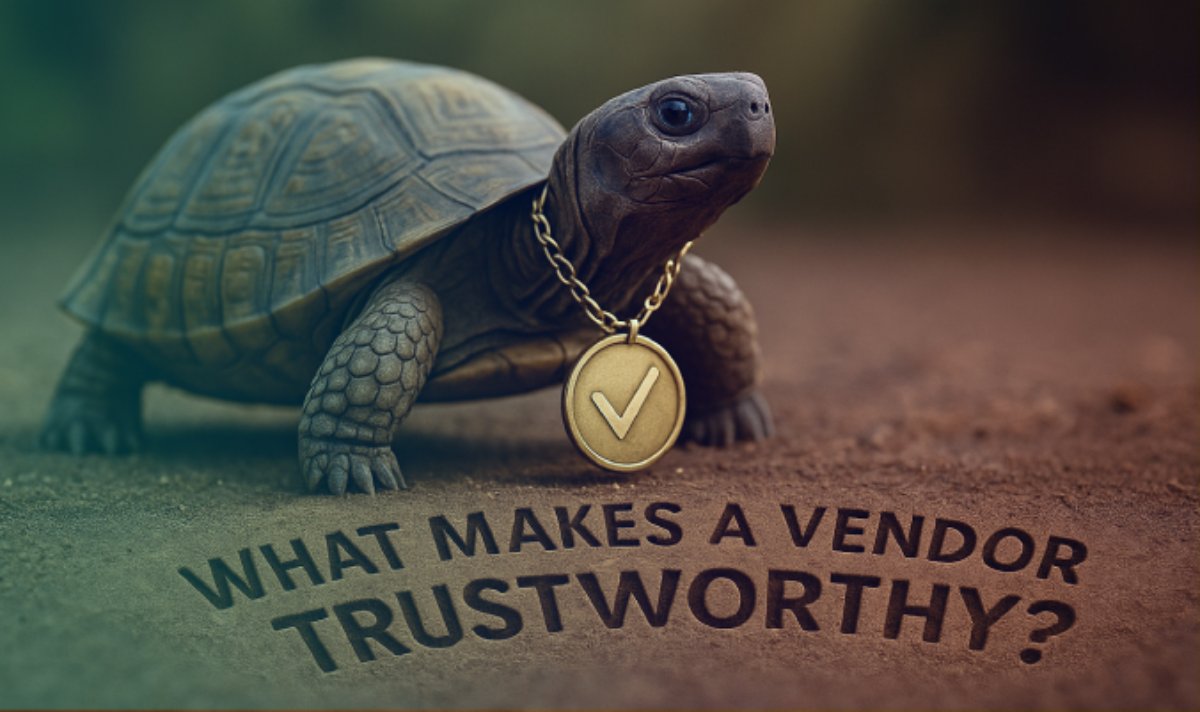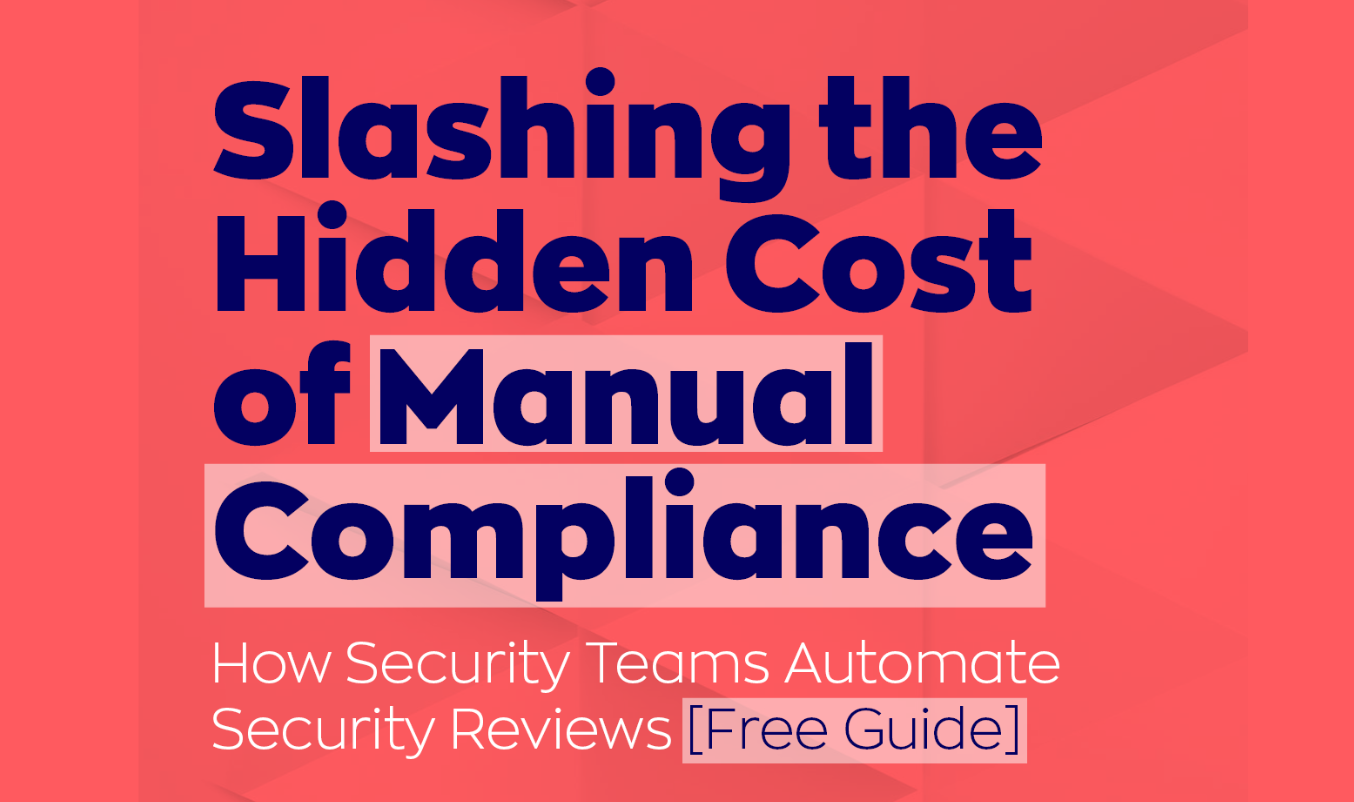Compliance Readiness in 2025: What Makes a Vendor Truly Trustworthy?

Trust. It’s one of those words vendors love to toss around in presentations and sales decks. But in 2025, trust isn’t built on polished slides-it’s built on proof.
As regulations tighten and digital risks evolve, companies are no longer swayed by vague assurances. They want real compliance readiness, transparent processes, and confidence that partnering with you won’t land them in tomorrow’s headlines.
We recently explored how automation is changing the compliance landscape, saving teams from repetitive tasks and enabling them to respond to security questionnaires in record time. But while automation is powerful, it’s not the full story.
Trust comes from what that technology enables: transparency, accountability, and the ability to handle unexpected audits without breaking stride. And just as importantly, it comes from knowing when technology needs a human hand to guide it.
In this article, we take a close look at what sets truly trustworthy vendors apart in 2025. From proactive risk management to cultural cues and the fine print in contracts, here’s what separates those who talk about trust from those who earn it, every single day.
What Trust Looks Like in 2025
Regulatory Vigilance
Gone are the days when checking a compliance box once a year could pass as due diligence. In 2025, trust starts with staying ahead of a constantly evolving regulatory landscape.
Frameworks like CSRD, DORA, the EU AI Act, and NIS2 are raising the bar, not just reshaping expectations, but expanding them. Today’s standards demand visibility far beyond your immediate vendors.
Buyers now expect you to know who your vendors’ vendors are, what risks those subcontractors carry, and how fast incidents can be flagged and addressed.
That kind of visibility doesn’t happen by accident-it requires systems, ownership, and sometimes, tough contractual conversations. We’ll dig into how to handle that later.
Certifications & Verifiable Proof
A shiny SOC 2 or ISO 27001 badge that opens doors. Now? It’s just your entry ticket.
Buyers want substance behind the symbols: current attestations, accessible documentation, and clear processes to support it all. Logos on a website don’t earn trust if they can’t stand up in an audit room.
The vendors who lead treat certifications as living commitments, proof that evolves with the landscape, not trophies gathering dust.
Transparency & Documentation
Buyers don’t want to wait days for basic information, dig through cluttered portals just to confirm you’re following security best practices.
The vendors that stand out are those who make it easy to obtain the answers. That means sharing up-to-date security documentation, showcasing real examples of how you protect customer data, and responding to questionnaires clearly and quickly.
When you make information accessible and straightforward, you’re not just ticking a box-you’re building trust from the start.
Core Pillars of a Trustworthy Vendor
So, what does real compliance readiness look like in practice? These are the habits and systems that define a trustworthy vendor in 2025:
- Maintain a real-time vendor inventory: Know exactly who you’re working with, both direct and indirect partners. Keeping this list current helps you avoid blind spots.
- Tier vendors by risk and data use: Not all vendors carry equal weight. Focus more scrutiny where the stakes are higher, such as those handling sensitive data or critical systems.
- Automate document collection: Utilize intelligent tools to collect and verify compliance evidence. It saves time and ensures nothing important slips through the cracks.
- Run ML-based compliance checks: AI can help flag outdated certifications or unusual patterns before they become problems, but it still needs human review.
- Set up proactive alerts: Stay ahead of expiration dates and required renewals. Notifications about missing assessments or lapsing certifications can be a lifesaver.
- Monitor vendors continuously: Annual check-ins aren’t enough. Real-time monitoring tools let you spot issues as they happen, not after the fact.
- Provide clear compliance evidence: Share up-to-date certifications and documentation with confidence. Buyers don’t want a treasure hunt-they want answers.
- Communicate with transparency: Respond quickly and clearly to compliance questions. Silence or slow replies erode trust fast.
- Embed compliance into contracts: Contracts should include breach notification clauses, audit rights, and clear expectations to ensure adherence to relevant regulations. Trust isn’t just a feeling-it’s enforceable.
The Trustworthiness Checklist
Need a quick gut-check on whether a vendor is truly compliance-ready in 2025? Here’s what to look for-and why it matters.
These aren’t “nice-to-haves” anymore. They’re the new baseline for building and proving trust in a complex compliance world.
Building Genuine Trust: Technology + Relationships
RegTech & AI-Enhanced Workflows
Today’s platforms utilize machine learning to identify unusual patterns, surface risks more quickly, and help teams stay prepared for audits, rather than scrambling to catch up.
Some even centralize compliance documentation and evidence into a single AI trust center, giving buyers and regulators a clearer view of how security controls are actually managed.
But no matter how advanced the tools, they’re not infallible. Algorithms can miss context. Dashboards can look clean even when risks are quietly building. That’s why the best vendors use technology to support sound judgment, not replace it.
For buyers in 2025, trust doesn’t come from seeing automation at work. It comes from seeing the right results, supported by evidence and real accountability.
Vendor Communication & Collaboration
Even the smartest tech can’t replace clear, human conversations. The vendors who stand out are the ones who treat communication as part of their compliance posture, not an afterthought.
They don’t just send over a yearly spreadsheet and call it good. Instead, they open up real dialogue with their suppliers, invite honest feedback, and resolve issues quickly before they become problems.
This type of collaboration fosters a shared responsibility. When vendors and clients work together, compliance isn’t just enforced-it’s embraced.
Contracts & Escape Clauses
Here’s the thing: if a vendor truly stands behind their security and compliance practices, it shows up in the contract.
Trustworthy vendors don’t push back when you ask for breach notification clauses, audit rights, or clear service-level expectations. They include them willingly, because they know their house is in order.
These aren’t “gotchas.” They’re mutual safeguards. And in a world where risks can evolve overnight, a contract that anticipates the unexpected is one more way to prove you’re prepared.
Real-World Transformations
Orca Security: Turning Browser Chaos into Clarity
Orca’s GRC team was drowning in browser-based security questionnaires that traditional tools couldn’t even parse. “We were using Excel sheets to try and organize our compliance data,” said Maayan Levin, GRC Manager. “But it wasn’t working.”
After switching to Vendict, with seamless browser integration and AI-backed completion questionnaires that once took days, now get knocked out in a fraction of the time. The result? Over 90% faster response times and more hours back for actual security work.
Apono: From Weeks of Waiting to Hours of Winning
With a globally distributed team and a growing pile of RFPs, Apono’s questionnaire process was dragging, often taking a full week or more to complete a single request.
“It was really complicating things,” said Henry Cook, Sales Engineer. But once Vendict’s automation kicked in, turnaround times dropped from weeks to hours. “Now I can finish one in an afternoon. That time savings lets me actually focus on closing deals, not chasing documents.”
SecuriThings: Streamlining Multi-Platform Compliance
For a fast-scaling IoT security company, keeping up with ISO and SOC 2 requirements while handling routine vendor assessments was burning through resources. “We were investing a lot of time in manual processes,” said Ido Jaffe, VP of Customer Success.
Vendict flipped the process. Now, compliance evidence is centralized, and questionnaires are answered in record time. It’s helped SecuriThings onboard customers faster and build trust through readiness that shows.
Overcoming Challenges & Risks
Even the most prepared vendors deal with friction. In 2025, a few persistent challenges continue to trip up even the most compliance-focused teams:
Visibility Gaps
It’s not enough to know your direct vendors-you need to know who they rely on, too. Fourth parties, subcontractors, and hidden dependencies can quietly introduce risk into your ecosystem. When a breach hits one of them, it becomes your problem.
That’s why modern vendor programs need better mapping tools, ongoing discovery, and tighter contracts that extend obligations down the chain.
Supply Chain Complexity
Today’s vendor relationships aren’t tidy lists-they’re sprawling networks. You might work with a vendor who relies on ten others, each with varying controls, certifications, and risk levels. Tracking all of that can feel overwhelming, but ignoring it isn’t an option.
Mature third-party risk management includes tiering by criticality, using shared assessment platforms, and updating inventories as often as the business changes.
Rapid Regulatory Shifts
Laws like GDPR, ADPPA, DORA, and the AI Act aren’t just complex-they’re moving targets. Staying compliant isn’t just a legal task; it’s a full-time operational reality.
The vendors that keep up build internal playbooks, assign clear ownership, and rely on regulatory intelligence platforms to track changes in real time. They don't just react-they plan for agility.
What Buyers Should Do Now
If you're evaluating vendors, or re-evaluating old ones, here are practical steps to make sure they’re truly ready for the compliance demands of 2025:
Conclusion - The Trust Advantage
In 2025, trust doesn’t come from logos or long checklists. It comes from clarity, consistency, and the ability to back up every promise with proof.
The vendors who earn that trust aren’t just avoiding risk-they’re building resilience, strengthening relationships, and showing up when it matters most.
If you’re assessing your current vendor program and something feels off, don’t wait for a compliance gap to prove it. Now’s the time to tighten the process, raise the bar, and work with partners who are ready for what’s next.
.png)








.png)
